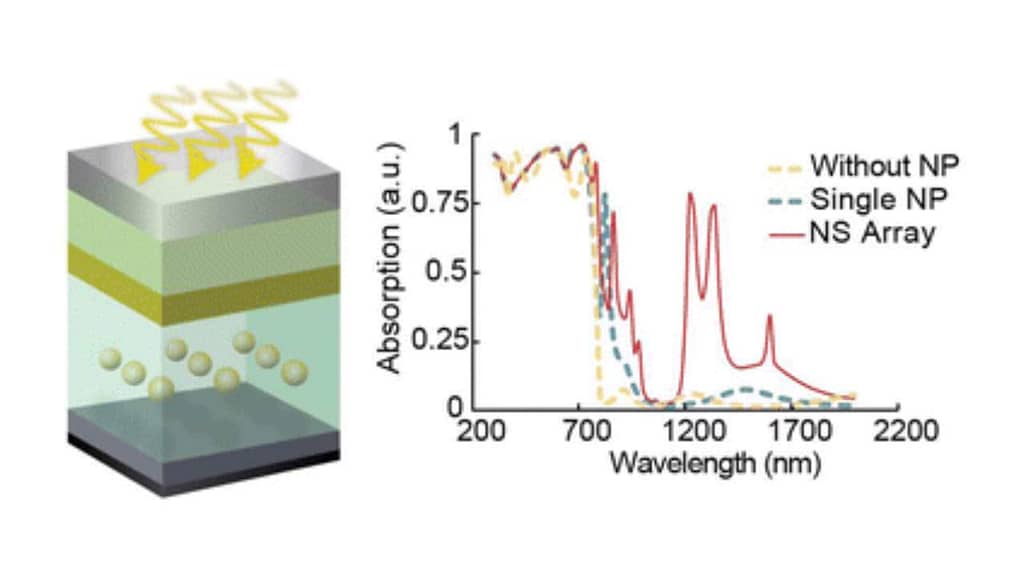Abstract:
Mixed organic–inorganic halide perovskite solar cells (PSCs) are a promising technology with increasing power conversion efficiency (PCE), low-cost material constituents, simple scalability, and a low-temperature solution fabrication process. Recent developments have seen energy conversion efficiencies increase from 3.8% to over 20%. However, to further improve PCE and reach the target efficiency of over 30%, light absorption through plasmonic nanostructures is a promising approach. In this work, we present a thorough quantitative analysis of the absorption spectrum of a methylammonium lead iodide (CH3NH3PbI3) perovskite solar cell using a nanoparticle (NP) array. Our multiphysics simulations using finite element methods (FEM) show that an array of Au nanospheres can increase average absorption >45%, compared to only 27.08% for the baseline structure without any NPs. Furthermore, we investigate the combined effect of engineered enhanced absorption on electrical and optical solar cell performance parameters using the one-dimensional solar cell capacitance software (SCAPS 1-D), which shows a PCE of ∼30.4%, significantly higher than the PCE of ∼21% for cells without NPs. Our findings demonstrate the potential of plasmonic perovskite research for next-generation optoelectronic technologies.
DOI: 10.1039/D3RA02589F

